The Pooled Migration Fund: A Commitment to Wyoming’s Wildlife
The WYldlife Fund, in partnership with the Wyoming Game and Fish Department (WGFD), is dedicated to the conservation of Wyoming’s wildlife and their habitats. Through the Pooled Migration Fund (PMF), this collaborative effort unites various stakeholders to protect and enhance the migratory habitats of Wyoming’s big game species. By leveraging resources from diverse Farm Bill programs and state expertise, the PMF supports voluntary conservation on private and Tribal lands, fostering a network of conservation efforts across Wyoming.
In 2022, a significant agreement was signed by USDA Secretary Tom Vilsack and Wyoming Governor Mark Gordon, highlighting Wyoming’s leadership in big game migration science and conservation. The PMF seeks proposals from a wide array of partners, including NGOs, state agencies, and land trusts, to expand conservation efforts and increase the impact on migratory habitats.
Earlier this year, The WYldlife Fund Board awarded funding to three pivotal projects, each of which addresses unique conservation challenges and opportunities across Wyoming. Here’s a closer look at these projects:
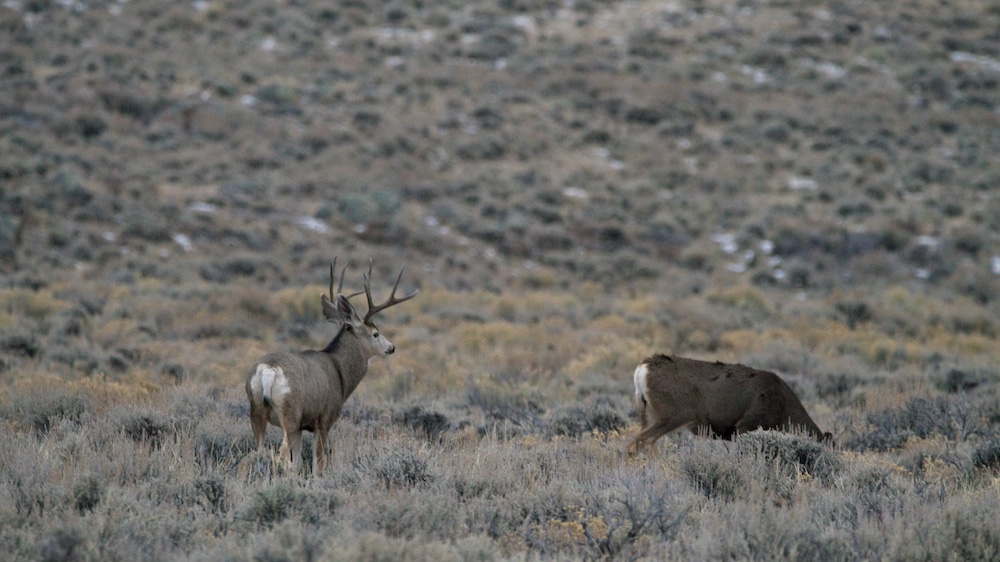
Photo courtesy of the Wyoming Game & Fish Department.
1. Carbon County Weed and Pest
Invasive weeds, particularly cheatgrass, pose a significant threat to native rangelands and wildlife habitats in Carbon County. Cheatgrass outcompetes native plant species, creating dense, monotypic stands that offer little nutritional value to wildlife such as mule deer, pronghorn antelope, bighorn sheep, elk, and sage-grouse.
To address this issue, the Carbon County Weed and Pest (CCWP), in partnership with private, state, and federal entities, has embarked on an extensive project to control and manage cheatgrass proliferation. Through the PMF, The WYldlife Fund awarded $100,000 to this initiative, which aims to protect and restore crucial wildlife habitats across approximately 8,900 acres of land.
The primary treatment method involves aerially applying Indaziflam (Rejuvra) using rotor-wing aircraft at a rate of 5 ounces per acre. Indaziflam has been shown to provide longer-term control of cheatgrass compared to previous treatments like Imazapic (Plateau), which only offers control for about 2-3 years. This treatment is critical in maintaining the health and diversity of native plant communities, thereby supporting higher-quality wildlife habitats.
To accurately map cheatgrass cover, CCWP uses high-resolution satellite imagery from Planet, coupled with ground-truth data. This collaboration enhances monitoring precision, enabling effective management of cheatgrass proliferation.
Reese Irvine, project supervisor, said in a statement, “Carbon County Weed and Pest is excited to partner withThe WYldlife Fund to treat cheatgrass in the Platte Valley. These treatments are taking place in mule deer migration corridors, crucial winter range, and sage-grouse core areas. With the support from The WYldlife Fund, we will be able to treat an additional 1,458 acres of these crucial habitats!”
CCWP and its partners are committed to the long-term success of this project. Continuous monitoring efforts will ensure that if infestations are identified outside previously treated areas, new treatments can be implemented to protect past efforts and further improve habitat conditions. This adaptive management approach ensures that the project can respond dynamically to emerging challenges and opportunities, enhancing its overall impact on the ecosystem.
2. Little Snake River Conservation District
The Little Snake River Conservation District is spearheading a project focused on habitat improvement through juniper removal and shrub treatments. This initiative is part of a long-term effort to enhance the habitat of the Baggs Mule Deer Herd, benefiting mule deer, sage-grouse, and other big game species.
Scheduled for 2024, the project will involve mechanical treatments to remove juniper trees and improve aspen and mixed mountain shrub habitats across 1,200 acres. These treatments will create diverse age classes and species, providing nutritious forage and reducing the risk of catastrophic wildfires. The project also aims to improve habitat quality in crucial winter ranges and stopover sites within designated migration corridors.
“Mule deer numbers are down west wide and after the catastrophic winter kill of 2023 in the Baggs Herd unit, the population hit rock bottom,” said Larry Hicks, Natural Resource Coordinator for the Little Snake River Conservation District. “If we are going to restore this iconic herd back to its 20,000-head strong objective, it’s going to require high quality habitat. It is an all hands on deck approach across all land ownership patterns, including private, state, BLM, and USFS administered lands to restore and enhance crucial habitats and maintain critical migration corridors. The WYldlife Fund has joined a comprehensive landscape scale habitat restoration project and is providing significant funding with other partners to accomplish the goals of restoring this iconic mule deer herd back to its prominence as one of the greatest mule deer herds in the west. Without the support of the WYldlife Fund and the other partners, this effort would not be possible.”
The PMF awarded $75,000 to this initiative, which will continue to monitor and treat areas on a five-year basis.
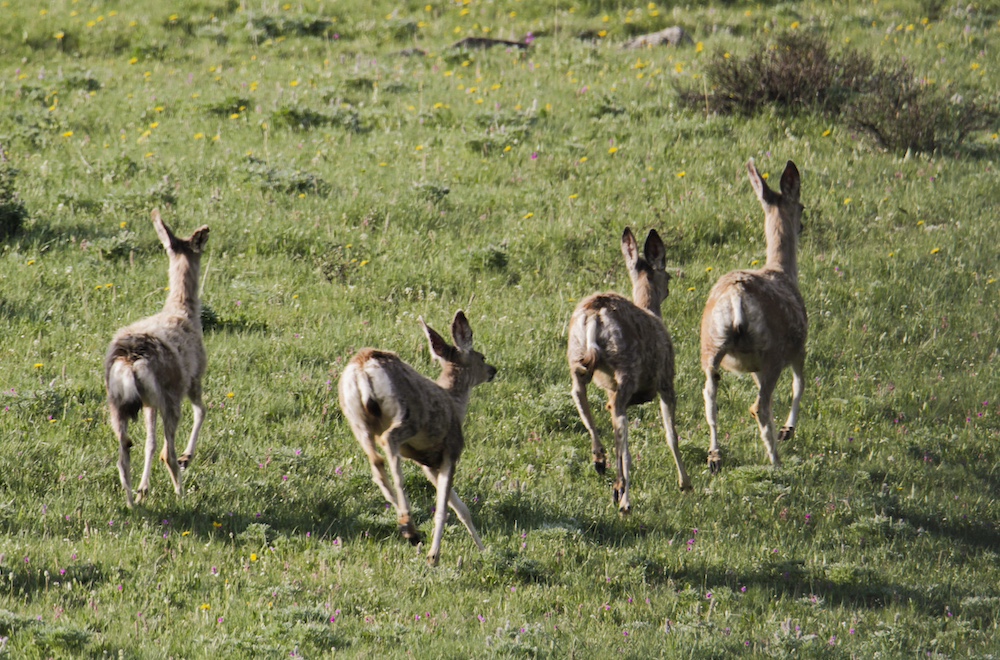
Mule deer in Ten Sleep, June 2017. Photo by Erin Bormett, Wyoming Game & Fish Department.
3. Sublette County Wildlife Friendly Fence Program
Western Wyoming, a stronghold for big game and sage-grouse, faces challenges from landscape fragmentation due to human population growth. One significant barrier to wildlife movement is traditional fencing, which can entangle and injure animals.
To mitigate these risks, the WGFD, in collaboration with local livestock producers, is converting up to 40 miles of fence to wildlife-friendly specifications. These modifications include lowering fence heights, increasing wire spacing, and creating crossing structures that allow safe passage for pronghorn and mule deer. This project, spread over three years (2024-2027), aims to enhance migration corridors and reduce wildlife injuries, contributing to the long-term sustainability of these species.
Of this project, Troy Fiessler, Terrestrial Habitat Biologist with WGFD, said, “While fencing is an essential component of our landscape, it can create severe hazards for wildlife from impeding seasonal migrations to restricting access to key habitats. Located within Sublette County, the Upper Green Fence Initiative strives to provide knowledgeable landowner consultation and more effectively focus implementation of wildlife-friendly fences in areas that provide the greatest benefit to wildlife. With the added support of The WYldlife Fund’s Pooled Migration Funds, our initiative is able to continue mitigating the risks posed by fences through modifications, conversions and removals across dozens of additional miles.”
A total of $75,000 from the PMF was awarded to this project. A well-maintained fence has an expected lifetime of at least 20 years, if not longer. All landowners who participate in this project using PMF funds have agreed to maintain their proposed fences at wildlife-friendly standards for a minimum of 20 years, promising safe passage for wildlife for at least two decades!
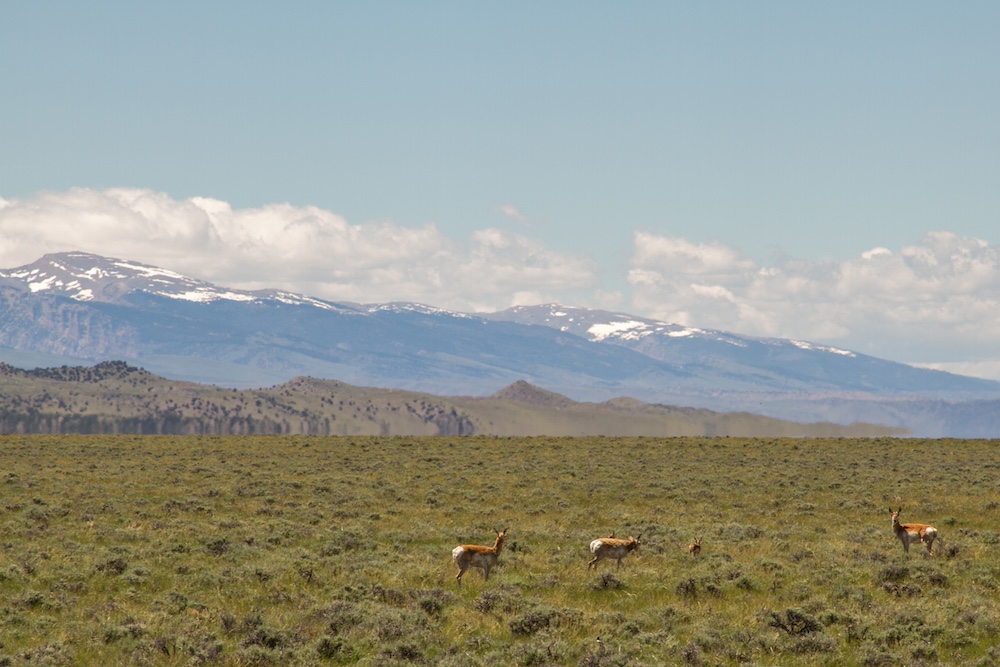
Photo courtesy of the Wyoming Game & Fish Department.
The Pooled Migration Fund exemplifies the power of collaboration in wildlife conservation. By addressing critical challenges like invasive species, habitat degradation, and landscape fragmentation, the PMF-funded projects are making a tangible difference in preserving Wyoming’s rich wildlife heritage. Through continued partnership and innovative solutions, these efforts ensure that Wyoming’s big game populations can thrive for generations to come.
The Moose Fund: A Lifeline for Struggling Moose Populations
In the vast and rugged landscapes of Wyoming, where wildlife thrives amidst stunning natural beauty, moose populations are struggling. These majestic animals are facing challenges that threaten their existence, from habitat loss to warming temperatures. Fortunately, passionate individuals like Mary Rumsey are stepping up to ensure the survival of these iconic creatures through initiatives like The Moose Fund.

Photo courtesy of the Wyoming Game & Fish Department.
The Origins of The Moose Fund
Mary Rumsey, a resident of Meeteetse, Wyoming since 1997, has long held a deep love for moose. Over the decades she’s lived in Meeteetse, she and her neighbors noticed a steady decline in moose numbers. Mary had grown used to seeing them lounging in her front pasture and was comforted by their presence, so it was noticeable when moose started making fewer and fewer appearances. Recognizing the plight of these animals, in 2022 Mary took action by establishing The Moose Fund, a dedicated initiative within The WYldlife Fund aimed at supporting projects and research focused on moose conservation and habitat restoration.
The Moose’s Struggle
Moose are impressively adapted to their northern habitats, with long legs to navigate marshes and deep snow, and dark hair to keep them warm in frigid winters. However, they face significant challenges in warmer climates. All these winter adaptations work against them in the summer months. Moose begin to overheat in temperatures above 56 degrees Fahrenheit, meaning the steadily warming summers have pushed moose tolerance levels to their limits. Wanting to better understand the effects of warming temperatures on moose, the University of Wyoming began a research project in 2020, which was generously funded by Mary and the Wyoming Game & Fish Commission.
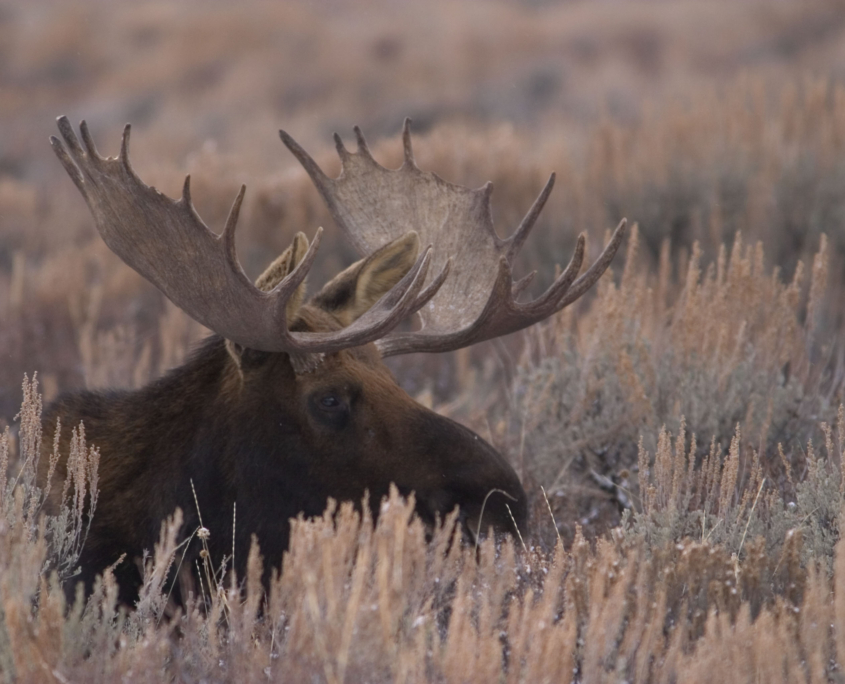
Photo courtesy of the Wyoming Game & Fish Department.
Researchers found that, in trying to stay cool, moose choose water more often than shade. This hefty mammal needs to lay on wet ground or in standing water in order to release potentially life-threatening heat. In the face of a warming, drying climate, this is difficult news.
However, not all hope is lost. The results of this study have created a new goal: to sustain moose populations through the maintenance and improvement of riparian areas such as creek bottoms and wetlands.
The Role of Beavers
Enter: beavers. Interestingly, the fate of moose is intertwined with these large rodents. Beavers, with their remarkable ability to engineer ecosystems through dam-building, create vital riparian habitat that benefits numerous species, including moose. Their dams create pools and wet areas where moose can cool down during hot weather, providing essential relief from heat stress.
Recognizing the connection between beavers and moose habitat, The Moose Fund supported a project to construct a beaver holding facility at the Cody Regional Office of the Wyoming Game and Fish Department in 2023. This facility, completed in late fall of 2023, enables the temporary housing of beavers awaiting translocation, ensuring their well-being and facilitating the restoration of riparian habitats critical for moose survival. Previously, the Cody Regional Office was using a mobile trailer that could only house one beaver family unit at a time, making trapping season slow. The new permanent facility has space for up to four families, allowing for more beavers to be translocated at a time and therefore leading to the creation of more wetland habitats. “This is a very cheap investment for the value of wetland we’re getting out of it,” said Jerry Altermatt, a terrestrial habitat biologist with the Wyoming Game & Fish Department. By relocating beavers to suitable habitats, these efforts not only restore ecosystem functions, but also create essential cooling spots for moose.
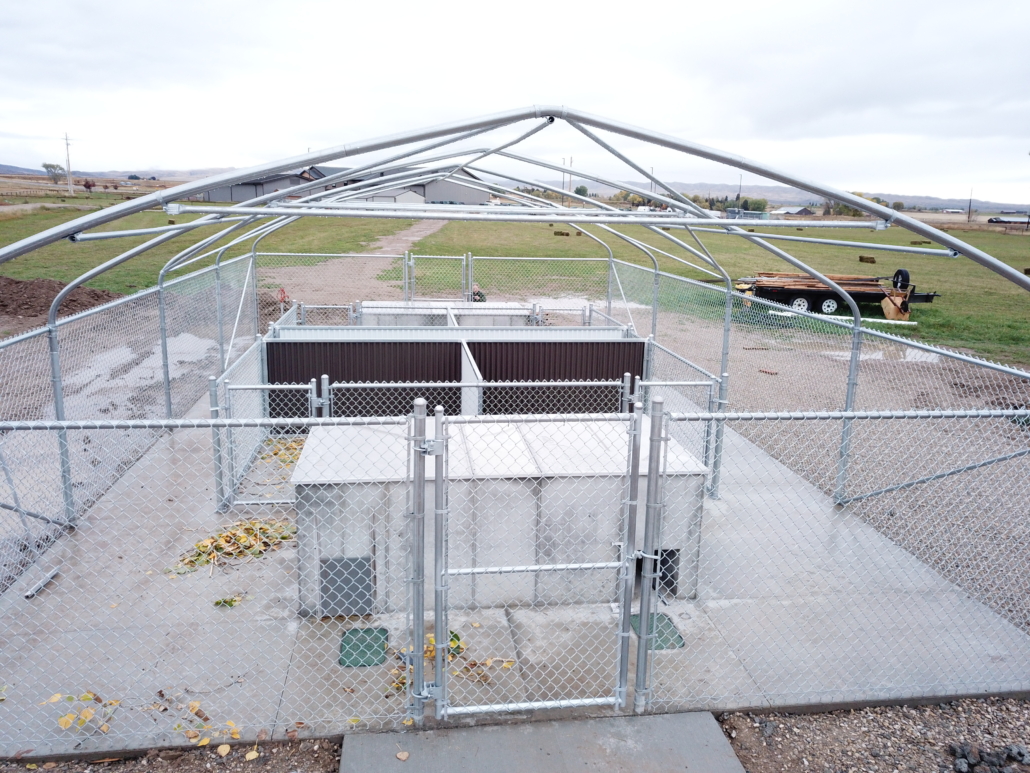
The new beaver holding facility at the Cody Regional Office of the Wyoming Game & Fish Department. Photo courtesy of Jerry Altermatt.

Photo courtesy of Jerry Altermatt.
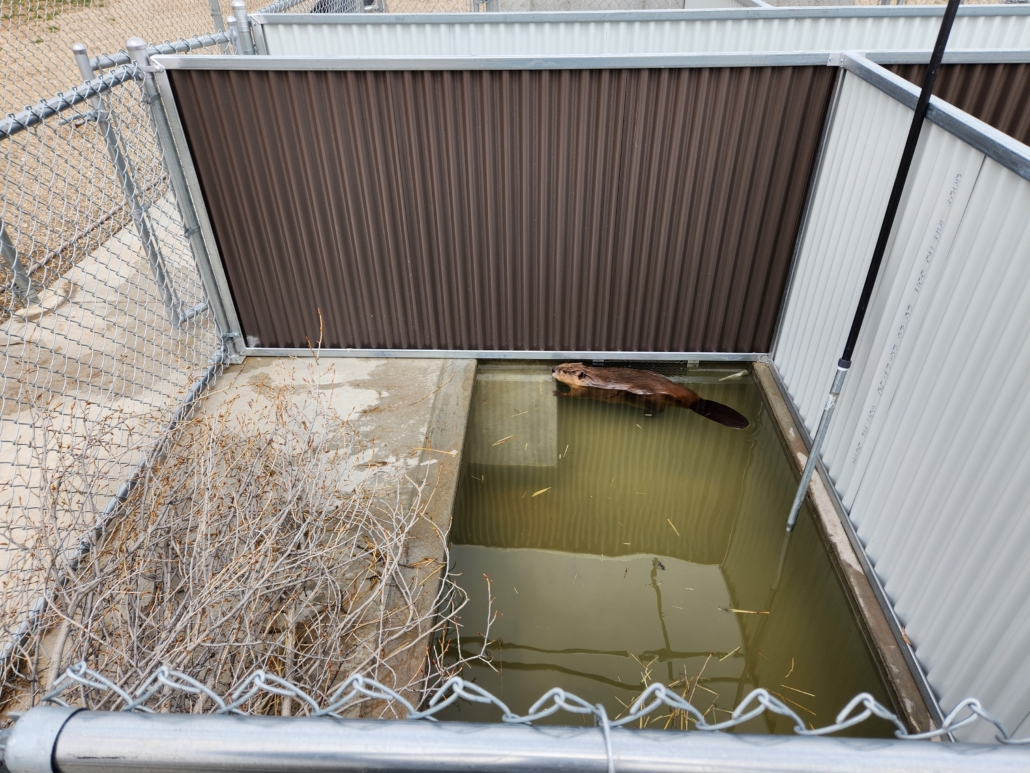
Photo courtesy of Jerry Altermatt.
As a warming, drying climate continues to pose challenges to wildlife, proactive conservation efforts like those supported by The Moose Fund become increasingly important. By investing in projects that address the root causes of habitat degradation and support keystone species like beavers, we can ensure a brighter future for moose and the ecosystems they inhabit.
The Moose Fund stands as a beacon of hope for struggling moose populations in Wyoming and beyond. Through the support of dedicated individuals like Mary Rumsey and collaborative efforts with organizations like the Wyoming Game and Fish Department, we can make a meaningful difference in preserving these iconic creatures and the habitats they rely on. As we continue to champion conservation initiatives, let us remember that by helping beavers, we are also helping moose and the rich tapestry of life that thrives in our wilderness.
If you are interested in making a restricted donation to The Moose Fund, please reach out to The WYldlife Fund at chris@thewyldlifefund.org or 307-316-3863.
Sage Grouse Fence Inventory
Through our signature program Wildlife Tourism For Tomorrow we were honored to support important sage-grouse fence inventory work through our good friends at the Jackson Hole Wildlife Foundation.
Spread Creek Fish Passage
The very first project funded in part by WYldlife For Tomorrow, a cutting edge initiative developed by Board Member Taylor Phillips, an initiative underneath the umbrella of The WYldlife Fund!
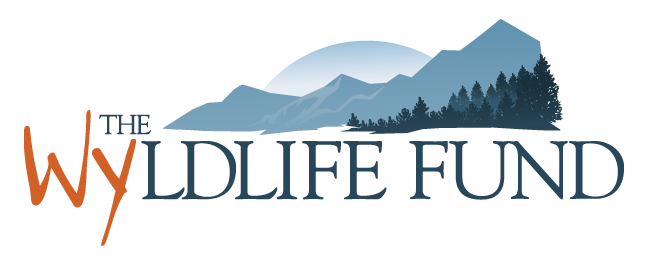


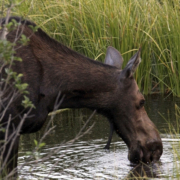
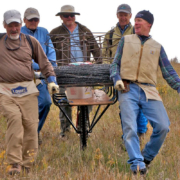
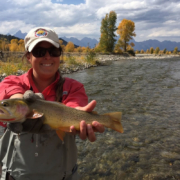 Courtesy of JH Trout Unlimited
Courtesy of JH Trout Unlimited